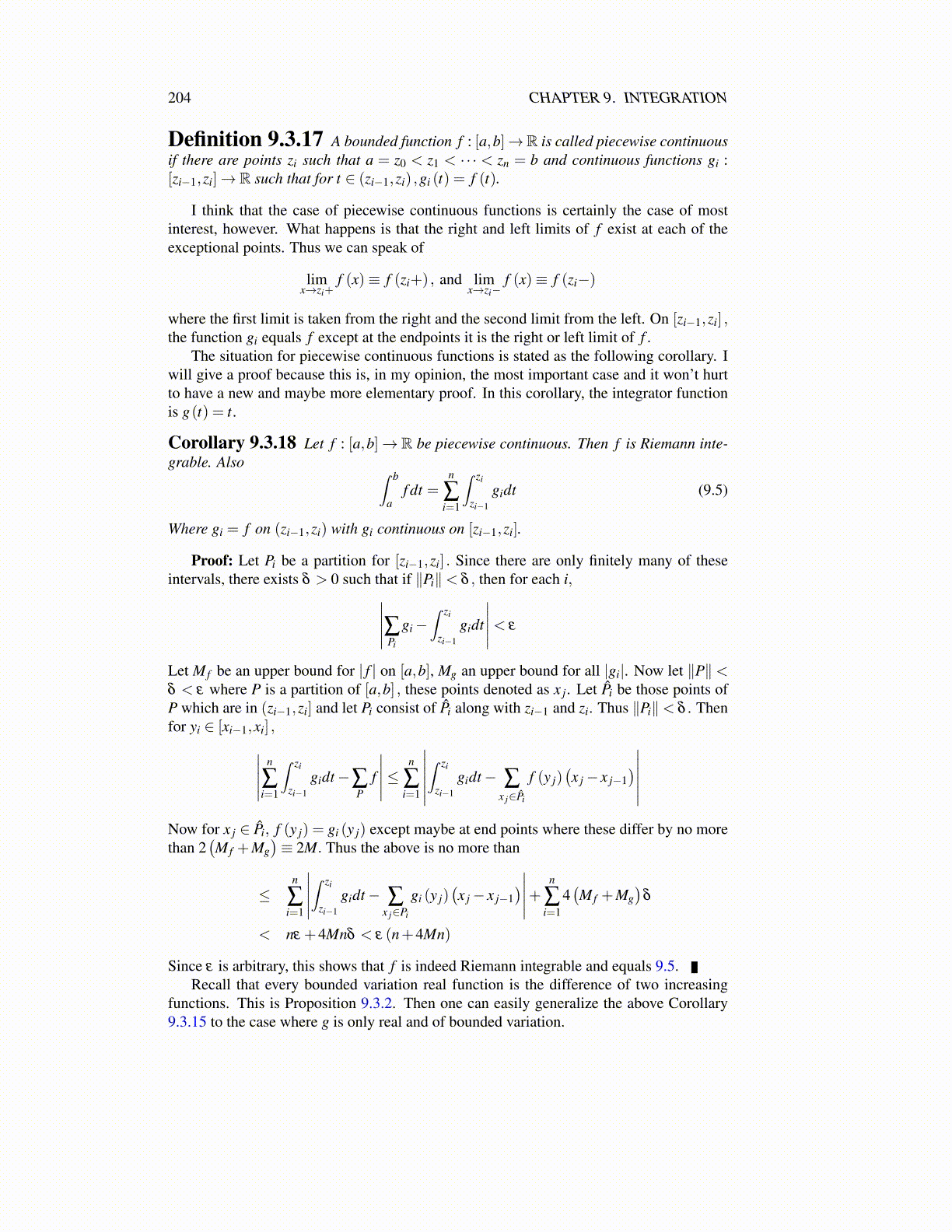
204 CHAPTER 9. INTEGRATION
and this has shown that from the definition, g ∈ R([a,b] , f ) and∫ b
agd f = f g(b)− f g(a)−
∫ b
af dg.
It is an easy theorem to remember. Think something sloppy like this: d ( f g) = f dg+gd f and so
f g(b)− f g(a) =∫ b
ad ( f g) =
∫ b
af dg+
∫ b
agd f (9.7)
and all you need is for at least one of these integrals on the right to make sense. Then theother automatically does and the formula follows.
Corollary 9.4.2 ∫ ba f dg exists if f is continuous and g of bounded variation or if g is
continuous and f of bounded variation.
Proof: This follows from the above integration by parts result and Theorem 9.3.7.The following proposition shows
∫ ba f (t)dg(t) =
∫ ba f (t)g′ (t)dt under suitable as-
sumptions. Actually, this will be true even if g has values in some vector space. To beginwith is an argument which could be used to show this. This argument is technical and forthe topics of interest in this book, the proposition is sufficient. Therefore, you might wantto go directly to the proposition. The reason that it is more complicated is that the meanvalue theorem is not available unless the function is real valued.
Suppose now that g is differentiable on [a,b] and has a continuous derivative x→ g′ (x) .Consider the following function where (x,y) ∈ [a,b]× [a,b]
k (x,y)≡
{ |g(y)−g(x)−g′(x)(y−x)||y−x| if x ̸= y
0 if x = y
Then k is continuous in the sense that if xn→ x,yn→ y, it follows that k (xn,yn)→ k (x,y).Thus it is uniformly continuous by Theorem 6.7.2. Thus if ∥P∥ < δ , for P a partition of[a,b] ,
n
∑i=1|g(xi)−g(xi−1)| ≤
n
∑i=1
∣∣g′ (xi)∣∣ |xi− xi−1|+
n
∑i=1
ε |xi− xi−1|
≤(ε +max
{∣∣g′ (x)∣∣ : x ∈ [a,b]})
(b−a)
Now note that whenever Q is a partition, the estimate for total variation obtained fromV (Qb,g) ≤ V ((Q∪P)b ,g). Therefore, in finding the total variation of g one can assumethat all partitions have norm no more than δ . Then since ε is arbitrary, this shows that
V[a,b] (g)≤ |b−a|max{∣∣g′ (x)∣∣ : x ∈ [a,b]
}Then by Theorem 9.4.1, both
∫ ba f dg and
∫ ba f g′dt exist. Then one can use a similar argu-
ment to what is about to be presented in the next proposition to conclude that these twointegrals are equal. The only difference is that in the general case, you would need to avoidthe mean value theorem and instead use a left sum to approximate the difference in g and asimilar argument to what was just presented to show that g is of finite total variation. Thereason for noting this argument is to allow the possibility that g has vector values, possiblyin an infinite dimensional space. However, for this book, we are mainly concerned with g